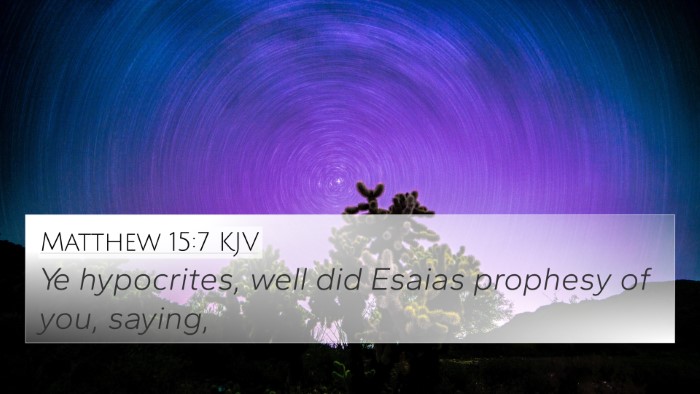Understanding Leviticus 13:8
Bible Verse: Leviticus 13:8
"And if the priest see that, behold, the scab spreadeth in the skin, then the priest shall pronounce him unclean: it is a plague." (KJV)
Contextual Overview
The book of Leviticus is vital for understanding the holiness code, which signifies God's standards for His people's conduct and the measures for maintaining ceremonial purity. In Chapter 13, God provides detailed instructions regarding skin diseases, often understood as leprosy or similar afflictions, which disqualified an Israelite from worship and community participation.
Insights from Public Domain Commentaries
This verse particularly addresses the role of the priest in determining the health status of individuals exhibiting skin diseases.
Matthew Henry's Commentary
- Role of the Priest: Matthew Henry emphasizes the priest’s responsibility in declaring a person clean or unclean, underscoring that this role is not just a health-related duty but a spiritual oversight that emphasizes the sanctity of God's covenant people.
- Scab as a Sign: The appearance of the scab is a pivotal indicator. The scabbing represents the manifestation of sin and impurity, suggesting that uncleanliness must be approached with caution and reverence.
- Judgment and Consequences: Once a scab is pronounced as unclean, it symbolizes a severe judgment, highlighting the need for ongoing vigilance concerning one's spiritual and communal standing before God.
Albert Barnes' Commentary
- The Principle of Detection: Barnes accentuates the biblical principle that community health is interconnected with spiritual health. The priest is tasked to observe and judge, as external maladies often parallel internal spiritual conditions.
- The Spread of Disease: He notes that a spreading skin affliction represents the danger of unchecked immorality or sin, which, if allowed to grow, can lead to separation from the community and from God.
Adam Clarke's Commentary
- Cultural Context: Clarke discusses the cultural ramifications of leprosy in ancient Israel, emphasizing its role in both health and social exclusion. The declaration of uncleanliness was to prevent the spread of disease and ensure communal purity.
- Symbolic Interpretation: He posits that this ceremonial law is reflective of deeper truths regarding sin and purification in a New Covenant context, wherein Christ can cleanse what was once deemed unclean.
Cross References
This verse connects to several key passages throughout Scripture, enhancing the understanding of purity, disease, and spiritual status:
- Leviticus 14:2-32: Instructions for the cleansing of those formerly afflicted, showcasing God's provision for restoration.
- Numbers 5:2-3: God instructs the Israelites to put out of the camp anyone with leprosy, again emphasizing communal purity.
- Matthew 8:2-3: The encounter of Jesus with a leper illustrates the New Testament fulfillment of healing and purity - a person formerly unclean is cleansed by faith in Christ.
- Isaiah 53:5: Points to the atoning sacrifice of Christ, who bore our sins and sicknesses, symbolically linking the concept of physical ailment and spiritual healing.
- 1 Peter 2:24: Reinforces the New Testament narrative of Christ's healing power and atonement for sin, paralleling physical disease with spiritual deliverance.
- James 5:14-15: Discusses prayer for the sick, showing the continuity of concern for physical health within a community of faith.
- Revelation 21:4: Envisions a future without sickness or pain, emphasizing God's ultimate plan for His people beyond the temporary afflictions of this life.
Conclusion
The study of Leviticus 13:8, when examined through the lens of these public domain commentaries and scripture references, reveals the depth and complexity of God's law concerning purity and community. This verse not only serves as a procedural guideline for ancient Israel but also prefigures deeper spiritual truths about sin, judgement, and the redemptive work of Christ.
Additional Resources
For those interested in studying the connections between biblical texts, tools for Bible cross-referencing can provide insightful methodologies:
- Bible Concordance: A valuable tool for locating verses and themes throughout scripture.
- Cross-Reference Bible Study: An effective approach to contextualize biblical narratives and themes.
- Bible Reference Resources: Comprehensive materials that assist in understanding interrelations of scripture.
- How to use Bible Cross-References: Techniques for discovering thematic and narrative connections across the Bible.







